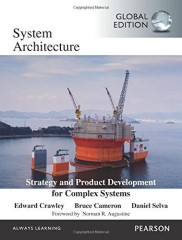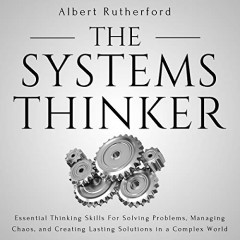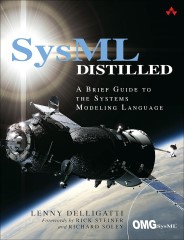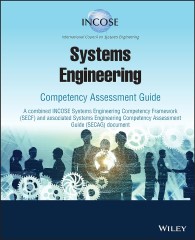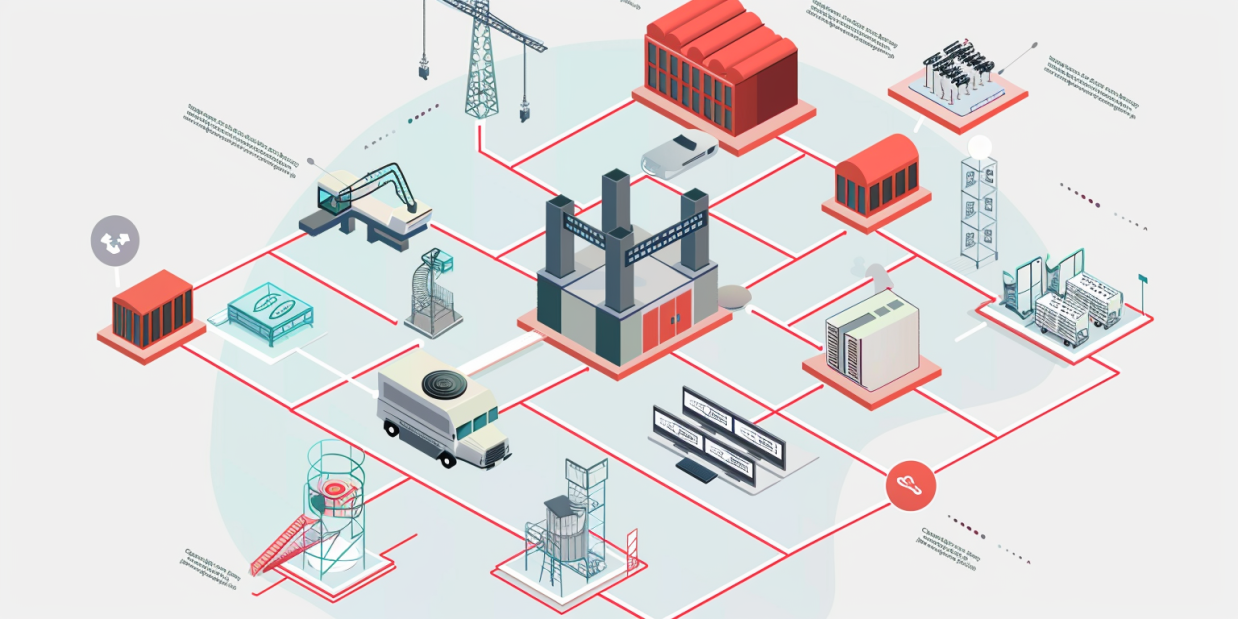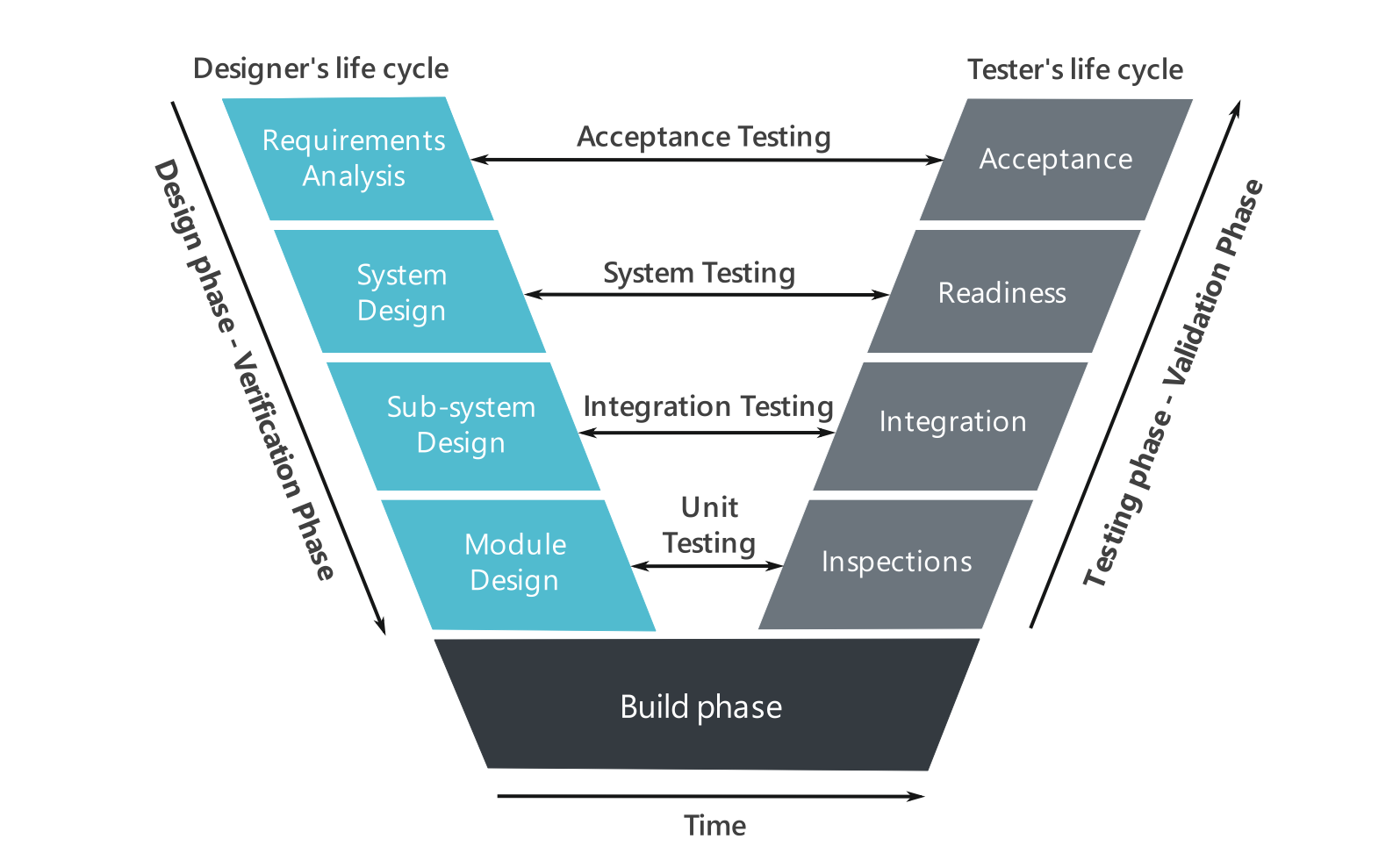In today’s rapidly evolving business landscape, the difference between project success and failure often lies in how well organisations define, understand, and implement their business requirements. Far from being mere documentation exercises, business requirements serve as the strategic compass that guides every aspect of project development, from initial conception through to final delivery and beyond.
Business requirements represent the highest level of organisational needs—they are the “why” behind every project initiative. Unlike functional or technical requirements that describe “how” a system should work, business requirements articulate the fundamental objectives, desired outcomes, and strategic value that an organisation seeks to achieve. They bridge the gap between executive vision and practical implementation, ensuring that every development effort aligns with broader organisational goals.
Table of Contents
- What Distinguishes Business Requirements
- The Requirements Hierarchy: Establishing Clear Levels and Relationships
- Building Robust Traceability: Connecting Requirements Throughout the Project Lifecycle
- Quality Assurance and Validation: Ensuring Requirements Meet Standards
- Change Management and Cross-System Integration
- Implementation Success: From Requirements to Delivered Value
- Conclusion: What Makes Good Business Requirements
What Distinguishes Business Requirements
The modern understanding of business requirements has evolved significantly from traditional approaches. Where organisations once treated requirements as static documents, today’s business requirements must be dynamic, traceable, and directly connected to measurable business value. They serve as the foundation upon which all other project requirements are built, creating a hierarchical structure that ensures consistency and alignment throughout the development lifecycle.
Business requirements differ fundamentally from other types of requirements in several key ways. They focus on organisational outcomes rather than system features, express strategic intent rather than technical specifications, and remain relatively stable throughout the project lifecycle while lower-level requirements may evolve. Most importantly, they provide the justification for why resources should be invested in a particular solution.
| Business Requirements | Functional Requirements | Technical Requirements |
|---|---|---|
| Strategic objectives and outcomes | Specific system behaviours and functions | Implementation details and constraints |
| Organisational-level scope | User-level scope | System-level scope |
| Stable throughout project | May evolve during development | Often change based on technology decisions |
| Answer “Why are we doing this?” | Answer “What must the system do?” | Answer “How will we build it?” |
The Five Critical Characteristics of Quality Business Requirements
Quality business requirements share five fundamental characteristics that distinguish them from poorly constructed requirements. These characteristics ensure that requirements serve their intended purpose of guiding successful project outcomes while minimising ambiguity and reducing project risk.
Clear and Unambiguous Communication forms the foundation of quality requirements. Business requirements must be written in language that all stakeholders can understand, avoiding technical jargon and ambiguous terms. This clarity ensures that executives, business users, and technical teams share a common understanding of project objectives. When requirements are clear, they reduce the likelihood of misinterpretation and costly rework later in the project lifecycle.
Complete Coverage of Business Needs ensures that requirements address all aspects of the business problem or opportunity. Complete requirements leave no gaps that could lead to missed functionality or overlooked business objectives. They encompass not just the primary business goals but also consider secondary objectives, constraints, and success criteria that may impact project outcomes.
Consistency Across All Requirements prevents conflicts and contradictions that can derail project progress. Consistent requirements align with each other and with broader organisational policies, procedures, and strategic objectives. This consistency extends to terminology, assumptions, and the logical relationships between different requirements.
| Quality Characteristic | Poor Example | Good Example |
|---|---|---|
| Clear | “The system should be fast” | “The system shall respond to user queries within 2 seconds during peak usage” |
| Complete | “Improve customer service” | “Reduce customer complaint resolution time by 40% while maintaining 95% satisfaction scores” |
| Consistent | Multiple terms for the same concept | Standardised terminology throughout all requirements |
| Correct | Assumptions presented as facts | Verified information from authoritative sources |
| Testable | “Users should find it easy” | “80% of new users complete the registration process without assistance” |
Correctness and Accuracy ensure that requirements reflect actual business needs rather than assumptions or preferences. Correct requirements are based on thorough analysis, stakeholder input, and verification of business processes. They accurately represent the current state of the business and the desired future state, supported by evidence rather than speculation.
Testable and Measurable Outcomes enable organisations to determine whether requirements have been successfully implemented. Testable requirements include specific criteria, metrics, and success measures that can be objectively evaluated. This measurability is crucial for project validation and provides a foundation for continuous improvement efforts.
Recommended Further Reading Amazon BooksWhy Business Requirements Matter: Beyond Project Documentation
The significance of well-crafted business requirements extends far beyond their role as project documentation. They serve as strategic tools that drive organisational alignment, enable informed decision-making, and provide a framework for measuring success. Understanding this broader impact helps organisations appreciate why investing in quality business requirements is essential for sustainable project success.
Business requirements create organisational alignment by establishing a shared understanding of project objectives among all stakeholders. When everyone from executives to developers understands why a project exists and what it aims to achieve, teams can make better decisions at every level. This alignment reduces conflicts, minimises scope creep, and ensures that resources are focused on activities that directly contribute to business value.
From a risk management perspective, comprehensive business requirements serve as an early warning system for potential project challenges. By clearly defining expectations, constraints, and success criteria upfront, organisations can identify risks before they become costly problems. This proactive approach to risk management significantly improves project success rates and helps organisations avoid the common pitfalls that plague poorly defined projects.
The economic impact of quality business requirements cannot be overstated. Research consistently shows that the cost of fixing requirements defects increases exponentially as projects progress through their lifecycle. Requirements errors identified during the requirements phase may cost hundreds of pounds to fix, while the same errors discovered during testing or after deployment can cost thousands or even millions of pounds to address.
Key Benefits of Quality Business Requirements:
- Strategic Alignment: Ensures all project activities support organisational objectives
- Risk Mitigation: Identifies potential issues before they become expensive problems
- Resource Optimisation: Focuses efforts on high-value activities that deliver business outcomes
- Stakeholder Engagement: Creates shared understanding and commitment across the organisation
- Decision Framework: Provides criteria for evaluating trade-offs and changes throughout the project
- Success Measurement: Establishes clear metrics for determining project value and return on investment
Business requirements also play a crucial role in organisational learning and continuous improvement. By clearly documenting what was intended and measuring what was actually achieved, organisations can refine their requirements processes and improve future project outcomes. This learning loop helps organisations become more effective at translating strategic vision into practical results.
The foundation established by quality business requirements ripples through every subsequent phase of project development. Well-defined business requirements enable more accurate estimation, more focused design efforts, more targeted testing strategies, and more effective change management. They provide the context that technical teams need to make appropriate implementation decisions and the framework that project managers need to maintain scope and schedule discipline.
As organisations face increasing pressure to deliver value quickly while managing complex stakeholder expectations, the role of business requirements becomes even more critical. They serve as the anchor point that keeps projects focused on delivering genuine business value rather than just technical functionality. In an era where digital transformation and rapid change are the norm, organisations that master the art and science of business requirements gain a significant competitive advantage in their ability to execute strategy through successful projects.
The Requirements Hierarchy: Establishing Clear Levels and Relationships
The hierarchical nature of requirements forms the backbone of successful project management, creating a structured approach that ensures every technical decision can be traced back to a business objective. This hierarchy is not merely an organisational tool—it represents the logical flow of value from strategic vision through to implemented solutions. Understanding and properly implementing this hierarchy is crucial for maintaining alignment between business goals and technical delivery.
At the apex of this hierarchy sit business requirements, representing Level 1 in the requirements structure. These high-level statements define organisational objectives, desired outcomes, and strategic value propositions. Below business requirements, the hierarchy cascades through stakeholder requirements, user requirements, and finally to solution requirements, each level becoming more detailed and specific while maintaining clear connections to the levels above.
Business Requirements as Level 1: Strategic Objectives and Organisational Goals
Business requirements occupy the highest level of the requirements hierarchy because they represent the fundamental “why” behind every project initiative. They articulate organisational objectives that transcend individual systems, departments, or user groups. These Level 1 requirements typically remain stable throughout the project lifecycle, providing an anchor point for all subsequent requirement decisions and changes.
The strategic nature of business requirements means they often span multiple projects, systems, or business units. A single business requirement might drive the development of several different technical solutions, each addressing different aspects of the overall objective. This one-to-many relationship between business requirements and lower-level requirements is a key characteristic that distinguishes them from more granular requirement types.
Effective business requirements at Level 1 share several common characteristics. They express outcomes rather than features, focus on organisational impact rather than system functionality, and provide measurable success criteria that can be evaluated independently of any specific technical implementation. They also tend to have longer lifespans than lower-level requirements, often remaining relevant across multiple project phases or even multiple projects.
| Requirement Level | Primary Focus | Typical Lifespan | Stakeholder Group | Example |
|---|---|---|---|---|
| Level 1 – Business | Strategic outcomes | Project duration + | Executive leadership | “Reduce customer acquisition costs by 25%” |
| Level 2 – Stakeholder | Group needs | Project phases | Department heads | “Sales team needs real-time lead scoring” |
| Level 3 – User | Individual tasks | Sprint/iteration | End users | “User can view lead score on contact page” |
| Level 4 – Solution | System behaviour | Development cycles | Technical teams | “System calculates lead score using ML algorithm” |
From Customer Needs to Business Requirements: Integration and Translation
The transformation of customer needs into business requirements represents one of the most critical—and challenging—aspects of requirements engineering. Customer requirements serve as vital inputs to business requirements, but they cannot simply be copied directly. Instead, they must be analysed, synthesised, and translated into organisational objectives that balance customer needs with business capabilities, market realities, and strategic priorities.
Customer requirements often arrive in various forms: direct feedback through surveys and interviews, indirect signals through usage patterns and behaviour analytics, market research insights, and competitive intelligence. Each source provides valuable input, but these diverse inputs must be reconciled into coherent business objectives that the organisation can realistically pursue.
The integration process requires careful analysis to identify patterns, priorities, and conflicts within customer requirements. Not all customer needs can or should be addressed, and some customer requests may conflict with broader business objectives or technical constraints. The art of requirements analysis lies in finding the optimal balance between customer satisfaction and business viability.
Customer Requirements Integration Process:
- Collection: Gather requirements from multiple customer touchpoints and feedback channels
- Analysis: Identify patterns, conflicts, and priorities within the collected requirements
- Translation: Convert customer language into business terminology and measurable objectives
- Validation: Confirm that translated requirements still address core customer needs
- Prioritisation: Rank requirements based on customer impact and business value
- Integration: Synthesise individual requirements into comprehensive business objectives
The translation process must preserve the intent and value of customer requirements while expressing them in terms that align with business strategy and capabilities. This often involves abstracting from specific customer requests to identify underlying needs and opportunities. For example, customer requests for faster response times might translate into business requirements for improved operational efficiency or enhanced customer satisfaction scores.
Stakeholder Requirements and User Requirements: The Bridge to Solutions
Stakeholder requirements and user requirements serve as the critical bridge between high-level business objectives and implementable technical solutions. These intermediate levels in the requirements hierarchy provide the detail and specificity needed to guide design and development efforts while maintaining clear connections to business value.
Stakeholder requirements typically represent the needs and expectations of specific organisational groups or roles. They translate business requirements into more specific objectives that address the concerns of particular constituencies within the organisation. Department heads, process owners, and other key stakeholders contribute requirements that reflect their understanding of how business objectives should be achieved within their areas of responsibility.
User requirements drill down further to describe the specific tasks, interactions, and outcomes that individual users need to accomplish. These requirements are often expressed as user stories in agile environments or as use cases in more traditional development approaches. Regardless of format, effective user requirements maintain clear traceability back to the stakeholder and business requirements they support.
The relationship between these requirement levels creates a validation mechanism that helps ensure completeness and consistency. Business requirements should be supported by appropriate stakeholder requirements, which in turn should be addressed by relevant user requirements. Gaps in this chain often indicate missing requirements or misalignment between business objectives and user needs.
| Stakeholder Type | Typical Requirements Focus | Validation Criteria |
|---|---|---|
| Executive Leadership | Strategic outcomes and ROI | Measurable business impact |
| Department Heads | Operational efficiency and process improvement | Departmental KPIs and metrics |
| Process Owners | Workflow integration and optimisation | Process performance measures |
| End Users | Task completion and usability | User satisfaction and productivity |
| Technical Teams | Implementation feasibility and maintainability | Technical quality and performance |
Requirements Prioritisation Frameworks: Managing Conflicting Demands
The reality of requirements management involves dealing with competing demands, limited resources, and conflicting stakeholder priorities. Effective prioritisation frameworks help organisations make informed decisions about which requirements deserve immediate attention and which can be deferred or modified. These frameworks provide objective criteria for evaluating requirements and create transparency in the decision-making process.
The MoSCoW method remains one of the most widely adopted prioritisation frameworks, categorising requirements into Must have, Should have, Could have, and Won’t have categories. This approach forces stakeholders to make explicit decisions about requirement importance while providing flexibility for managing scope and resources. However, successful implementation of MoSCoW requires clear criteria for each category and regular review to ensure priorities remain aligned with changing business conditions.
Value-based prioritisation approaches focus on the business value delivered by each requirement relative to its implementation cost and complexity. These methods require more sophisticated analysis but provide better alignment with business objectives and return on investment considerations. Risk-based prioritisation considers the potential impact of not implementing specific requirements, helping organisations identify requirements that are critical for business continuity or regulatory compliance.
Advanced Prioritisation Considerations:
- Dependency Analysis: Understanding how requirements relate to and depend on each other
- Technical Feasibility: Evaluating implementation complexity and resource requirements
- Market Timing: Considering competitive pressures and market opportunity windows
- Regulatory Compliance: Identifying requirements driven by legal or industry standards
- Strategic Alignment: Assessing how well requirements support long-term organisational goals
- Stakeholder Impact: Understanding who benefits from and who is affected by each requirement
Modern prioritisation approaches often combine multiple frameworks to provide comprehensive evaluation criteria. Weighted scoring models allow organisations to balance different factors according to their specific priorities and constraints. Regular reprioritisation sessions ensure that changing business conditions and new information are reflected in requirement priorities.
Building Robust Traceability: Connecting Requirements Throughout the Project Lifecycle
Requirements traceability represents the connective tissue that holds successful projects together, ensuring that every implemented feature can be traced back to a legitimate business need and that every business objective is addressed by appropriate technical solutions. This bidirectional visibility creates accountability, enables impact analysis, and provides the foundation for effective change management throughout the project lifecycle.
The concept of traceability extends beyond simple documentation—it creates a living network of relationships that evolves with the project while maintaining integrity and consistency. Modern traceability approaches leverage technology and process integration to provide real-time visibility into requirement status, implementation progress, and validation results.
Forward and Backward Traceability Implementation
Forward traceability tracks requirements from their origins through to implementation and testing, ensuring that every requirement is addressed by appropriate design decisions, development activities, and validation efforts. This downstream view helps project teams verify completeness and identify gaps where requirements may not be adequately addressed by the proposed solution.
The forward traceability process begins with business requirements and follows their evolution through stakeholder requirements, user requirements, functional specifications, design documents, code modules, test cases, and finally to validation results. Each step in this chain should maintain explicit links to the previous level, creating an unbroken path from business objective to delivered functionality.
Backward traceability works in the opposite direction, allowing teams to trace any implemented feature, design decision, or test case back to its originating business requirement. This upstream view is crucial for impact analysis, helping teams understand the business implications of technical changes and ensuring that no functionality exists without a clear business justification.
Forward Traceability Chain:
- Business Requirement → Stakeholder Requirement → User Requirement → Functional Specification
- Functional Specification → Design Document → Code Module → Unit Test
- Unit Test → Integration Test → System Test → Acceptance Test
- Acceptance Test → User Acceptance → Business Validation → Requirement Closure
Backward Traceability Chain:
- Code Module → Functional Specification → User Requirement → Stakeholder Requirement → Business Requirement
- Test Case → Requirement → Business Objective → Strategic Goal
- Defect → Failed Test → Requirement → Business Impact Assessment
- Change Request → Affected Requirements → Business Impact Analysis → Approval Decision
The bidirectional nature of comprehensive traceability creates powerful capabilities for project management and quality assurance. Teams can quickly assess the impact of proposed changes, identify orphaned functionality that serves no business purpose, and verify that all business objectives are adequately addressed by the technical solution.
From Business Requirements to System Requirements: Derivation and Connection
The derivation of system requirements from business requirements represents one of the most critical transitions in the requirements hierarchy. This process transforms high-level business objectives into specific technical capabilities while preserving the intent and value of the original business needs. Effective derivation requires both business acumen and technical expertise to ensure that system requirements genuinely support business objectives.
System requirements encompass both functional requirements that describe what the system must do and non-functional requirements that specify how well the system must perform. Both types of system requirements should maintain clear traceability back to their originating business requirements, creating a transparent connection between technical decisions and business value.
The derivation process typically involves decomposition, where broad business requirements are broken down into more specific technical capabilities, and synthesis, where related technical requirements are grouped and optimised for efficient implementation. This process must balance technical feasibility with business value while ensuring that the resulting system requirements are testable, implementable, and maintainable.
| Business Requirement | Derived Functional Requirements | Derived Non-Functional Requirements |
|---|---|---|
| “Reduce customer service response time by 50%” | Auto-routing of customer inquiries, Knowledge base integration, Response time tracking | System availability 99.9%, Response time <2 seconds, Concurrent user support 1000+ |
| “Improve sales team productivity by 25%” | Lead scoring automation, Sales pipeline visualisation, Activity tracking | Mobile device compatibility, Offline data sync, Integration with existing CRM |
| “Ensure regulatory compliance for data protection” | User consent management, Data encryption, Audit trail logging | Security standards compliance, Data retention policies, Access control mechanisms |
Maintaining Traceability in Dynamic Project Environments
Modern project environments are characterised by frequent changes, iterative development approaches, and evolving requirements. Maintaining traceability in these dynamic conditions requires robust processes, appropriate tooling, and a commitment to discipline in requirements management practices. The challenge lies in preserving traceability links while accommodating the flexibility needed for responsive project delivery.
Agile methodologies present particular challenges for traditional traceability approaches. User stories may evolve rapidly, acceptance criteria may change based on learning and feedback, and the traditional documentation-heavy approach to traceability may not align with agile values. However, the underlying need for traceability remains—teams still need to understand why they are building features and how those features support business objectives.
Modern traceability approaches in agile environments often leverage digital tools that integrate with development workflows, automatically capturing traceability relationships as they are created and updated. These tools can link user stories to business objectives, connect code commits to requirements, and associate test results with acceptance criteria, creating traceability without imposing excessive overhead on development teams.
Strategies for Dynamic Traceability Management:
- Automated Link Creation: Tools that automatically establish traceability links based on naming conventions and metadata
- Just-in-Time Documentation: Creating traceability artifacts when they are needed rather than maintaining comprehensive documentation throughout the project
- Visual Traceability Mapping: Graphical representations that make traceability relationships easy to understand and maintain
- Continuous Validation: Regular automated checks to identify broken or missing traceability links
- Impact Analysis Integration: Tools that automatically assess the impact of proposed changes on related requirements and implementations
Tools and Techniques for Effective Requirements Traceability
The selection and implementation of appropriate tools and techniques for requirements traceability can significantly impact project success. Modern traceability solutions range from simple spreadsheet-based matrices to sophisticated integrated platforms that automatically maintain traceability relationships across the entire development toolchain.
Requirements Traceability Matrices (RTMs) remain a foundational technique for capturing and visualising traceability relationships. While traditional RTMs were often maintained manually in spreadsheets, modern implementations leverage database technologies and integration capabilities to provide dynamic, real-time views of traceability status. These enhanced RTMs can automatically update as requirements change and provide alerts when traceability relationships are broken or incomplete.
Integrated development environments and project management platforms increasingly include native traceability capabilities that work seamlessly with existing development workflows. These tools can capture traceability relationships as a natural byproduct of development activities, reducing the overhead associated with maintaining traceability while improving accuracy and completeness.
Tool Selection Criteria for Traceability Management:
- Integration Capabilities: Ability to connect with existing development, testing, and project management tools
- Automation Features: Automated link creation, validation, and maintenance capabilities
- Visualisation Options: Multiple ways to view and understand traceability relationships
- Scalability: Ability to handle large numbers of requirements and complex relationship networks
- Reporting Functionality: Comprehensive reporting for compliance, audit, and project management purposes
- User Experience: Intuitive interfaces that encourage adoption and consistent use
The most effective traceability implementations combine appropriate tooling with well-defined processes and clear accountability for maintaining traceability relationships. Success requires not just technical capabilities but also organisational commitment to the discipline and rigor that effective traceability demands. When properly implemented, robust traceability becomes a competitive advantage that enables faster decision-making, reduces project risk, and improves the likelihood of delivering solutions that genuinely meet business needs.
Quality Assurance and Validation: Ensuring Requirements Meet Standards
Quality requirements form the bedrock of successful project delivery. Without rigorous quality assurance and validation processes, even well-intentioned requirements can lead to costly failures, scope creep, and stakeholder dissatisfaction. Modern quality assurance approaches focus on prevention rather than detection, embedding quality practices throughout the requirements lifecycle.
Measurable Quality Metrics for Business Requirements
Effective quality measurement requires objective criteria that can be consistently applied across different projects and requirement types. Quality metrics provide early warning indicators of potential problems while establishing benchmarks for continuous improvement efforts.
| Quality Metric | Measurement Approach | Target Range | Risk Indicators |
|---|---|---|---|
| Completeness | Requirements coverage analysis | 95-100% coverage | Missing stakeholder groups, gaps in process flows |
| Clarity | Stakeholder comprehension testing | 90%+ understanding rate | Multiple interpretations, technical jargon usage |
| Consistency | Cross-reference analysis | Zero conflicts | Contradictory statements, terminology variations |
| Testability | Acceptance criteria definition | 100% testable requirements | Vague success criteria, unmeasurable outcomes |
Key Quality Assessment Techniques:
- Requirements walkthrough sessions with diverse stakeholder groups
- Prototype validation to test requirement interpretation
- Cross-functional review processes to identify gaps and conflicts
- Automated analysis tools for consistency and completeness checking
- Stakeholder feedback surveys to measure clarity and comprehension
Documentation Standards and Validation Techniques
Modern documentation approaches balance comprehensive coverage with agile responsiveness. The choice between traditional Business Requirements Documents (BRDs) and alternative approaches depends on project context, organisational culture, and stakeholder preferences.
Documentation Format Comparison:
| Approach | Best For | Advantages | Limitations |
|---|---|---|---|
| Traditional BRD | Regulated industries, complex projects | Comprehensive, formal, audit-friendly | Time-intensive, less flexible |
| User Stories | Agile environments, user-focused projects | Flexible, conversation-driven, iterative | May lack business context |
| Use Cases | System-focused projects, workflow-heavy | Detailed interactions, comprehensive scenarios | Complex to maintain |
| Hybrid Models | Mixed methodologies, evolving requirements | Combines benefits, adaptable | Requires careful coordination |
Validation techniques must verify that requirements accurately represent stakeholder needs and business objectives. Early validation prevents costly rework while ensuring that development efforts address genuine business problems.
Non-Functional Requirements: Deriving Performance and Quality Attributes
Non-functional requirements often determine project success but are frequently overlooked during requirements gathering. These requirements define system qualities such as performance, security, usability, and reliability that are essential for business value realisation.
Critical Non-Functional Categories:
- Performance: Response times, throughput, scalability requirements
- Security: Data protection, access control, audit trail capabilities
- Usability: User experience standards, accessibility requirements
- Reliability: Availability targets, error handling, recovery procedures
- Maintainability: Support requirements, update procedures, documentation standards
Change Management and Cross-System Integration
Requirements evolution is inevitable in dynamic business environments. Effective change management processes balance flexibility with control, ensuring that necessary changes are accommodated without compromising project integrity or business value.
Requirements Evolution and Scope Management
Successful change management requires clear processes for evaluating, approving, and implementing requirement modifications. These processes must distinguish between legitimate business changes and scope creep while maintaining traceability and stakeholder alignment.
Change Classification Framework:
| Change Type | Approval Authority | Impact Assessment | Documentation Requirements |
|---|---|---|---|
| Clarification | Business Analyst | Minimal impact | Update existing requirements |
| Enhancement | Product Owner | Moderate impact | Impact analysis, effort estimation |
| Scope Change | Steering Committee | Significant impact | Business case, resource reallocation |
| Strategic Pivot | Executive Leadership | Major impact | Complete requirements review |
Enterprise-Wide Requirements and Governance Structures
Complex organisations require governance structures that manage requirements across multiple systems, departments, and projects. These structures ensure consistency, prevent conflicts, and optimise resource allocation across the enterprise.
Governance Framework Elements:
- Requirements standards and templates across the organisation
- Cross-functional review processes for enterprise-wide impacts
- Conflict resolution procedures for competing requirements
- Resource allocation guidelines for competing priorities
- Communication protocols for requirement changes and updates
Implementation Success: From Requirements to Delivered Value
The ultimate test of business requirements lies in their successful translation into delivered business value. This final phase focuses on ensuring that requirements guide effective implementation while providing mechanisms for measuring and validating success.
Translation to Design and Development
Effective requirements translation requires collaboration between business stakeholders and technical teams to ensure that implementation decisions preserve business intent while addressing technical constraints and opportunities.
Implementation Success Factors:
- Regular stakeholder reviews during development phases
- Prototype validation to confirm requirement interpretation
- Continuous alignment checking between business objectives and technical solutions
- Flexible adaptation processes for addressing implementation discoveries
Testing Against Business Requirements and Success Measurement
Testing strategies must validate both functional compliance and business value delivery. This dual focus ensures that implemented solutions not only meet technical specifications but also achieve intended business outcomes.
| Testing Level | Business Focus | Success Metrics | Validation Method |
|---|---|---|---|
| Unit Testing | Feature correctness | Functional compliance | Automated test suites |
| Integration Testing | Process workflow | End-to-end functionality | Business process validation |
| User Acceptance | Stakeholder satisfaction | Usability and effectiveness | Stakeholder sign-off |
| Business Validation | Objective achievement | KPI improvement | Performance measurement |
Long-term Value Measurement:
- Return on investment calculations against original business case
- Key performance indicator tracking against requirement success criteria
- Stakeholder satisfaction surveys and feedback collection
- Continuous improvement identification based on actual vs. expected outcomes
- Lessons learned capture for future requirements processes
The journey from business requirements to delivered value represents a complex but manageable process that benefits from systematic approaches, appropriate tooling, and organisational commitment to quality and discipline. Success requires balancing comprehensive planning with adaptive responses to changing conditions while maintaining focus on genuine business value creation.
Conclusion: What Makes Good Business Requirements
Good business requirements are the cornerstone of successful project delivery, distinguished by five fundamental characteristics that separate effective requirements from costly failures. These requirements must be clear and unambiguous, eliminating confusion through precise language and measurable outcomes. They must be complete, covering all aspects of the business need without gaps that lead to missed functionality or overlooked objectives.
Consistency across all requirements prevents conflicts and contradictions that can derail projects, while correctness ensures requirements reflect actual business needs rather than assumptions. Finally, good business requirements must be testable, providing specific criteria for measuring success and validating achievement of business objectives.
Beyond these quality characteristics, effective business requirements operate within a clear hierarchy that flows from strategic business objectives through stakeholder and user requirements to implementable system specifications. This hierarchy, supported by robust bidirectional traceability, ensures that every technical decision serves a legitimate business purpose while enabling impact analysis and change management throughout the project lifecycle.
The hallmarks of exceptional business requirements:
- Strategic alignment that connects every requirement to measurable business value
- Stakeholder engagement that captures diverse perspectives while maintaining focus
- Adaptability that accommodates necessary changes without compromising project integrity
- Traceability that provides transparency from business objective to delivered functionality
- Validation that confirms requirements address genuine business needs before development begins
Most importantly, good business requirements serve as more than project documentation—they function as strategic tools that drive organisational alignment, enable informed decision-making, and provide the foundation for measuring project success. When crafted with discipline and maintained with rigour, quality business requirements become a competitive advantage that dramatically improves an organisation’s ability to deliver genuine business value through successful project outcomes.
The investment in developing comprehensive, well-structured business requirements pays dividends throughout the entire project lifecycle and beyond, creating the foundation for not just successful projects, but for organisational learning and continuous improvement that enhances future project capabilities.



